Showing Spotlights 169 - 176 of 336 in category All (newest first):
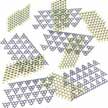 Photodetectors with a spectral response from the ultraviolet (UV) to visible light have significant importance in modern industrial and scientific applications such as imaging, communication, environmental monitoring and day and nighttime surveillance. Compared to other materials, the photo-current conversions of two-dimensional transition metal dichalcogenides such as MoS2 nanosheets are impressive, making them great candidates for next-generation visible light photodetectors. Researchers have now developed a facile and low-cost solution processing strategy to fabricate mechanically flexible 2D organic-inorganic hybrid thin-film photodetectors on a conventional filter paper.
Photodetectors with a spectral response from the ultraviolet (UV) to visible light have significant importance in modern industrial and scientific applications such as imaging, communication, environmental monitoring and day and nighttime surveillance. Compared to other materials, the photo-current conversions of two-dimensional transition metal dichalcogenides such as MoS2 nanosheets are impressive, making them great candidates for next-generation visible light photodetectors. Researchers have now developed a facile and low-cost solution processing strategy to fabricate mechanically flexible 2D organic-inorganic hybrid thin-film photodetectors on a conventional filter paper.
Mar 9th, 2017
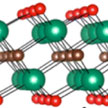 Next-generation electronics will be based on two-dimensional semiconductors, which have a significantly higher resistance than conventional silicon-based electronics. This development is significantly limited by the high contact resistance between the metal electrode and the 2D semiconductor. To minimize the energy dissipation and improve the device performance, it is critical to reduce the contact resistance. Researchers have now shown that MXenes, a class of 2D metal carbides or nitrides, can achieve low contact resistance with 2D semiconductors.
Next-generation electronics will be based on two-dimensional semiconductors, which have a significantly higher resistance than conventional silicon-based electronics. This development is significantly limited by the high contact resistance between the metal electrode and the 2D semiconductor. To minimize the energy dissipation and improve the device performance, it is critical to reduce the contact resistance. Researchers have now shown that MXenes, a class of 2D metal carbides or nitrides, can achieve low contact resistance with 2D semiconductors.
Feb 22nd, 2017
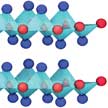 Researchers have demonstrated that nanoengineered SnO anodes suppress volume change and prolong sodium ion battery cycle life. Sodium ion batteries are promising alternative to lithium ion batteries, particularly for home based and grid level storage solutions. Tin monoxide has been demonstrated to have excellent physical and chemical properties and has a large theoretical capacity as battery anode, for instance for sodium ion batteries. Unfortunately, though, it also exhibits large volume change during the sodiation and lithiation process, which makes it unsuitable as a high-performing anode material.
Researchers have demonstrated that nanoengineered SnO anodes suppress volume change and prolong sodium ion battery cycle life. Sodium ion batteries are promising alternative to lithium ion batteries, particularly for home based and grid level storage solutions. Tin monoxide has been demonstrated to have excellent physical and chemical properties and has a large theoretical capacity as battery anode, for instance for sodium ion batteries. Unfortunately, though, it also exhibits large volume change during the sodiation and lithiation process, which makes it unsuitable as a high-performing anode material.
Feb 9th, 2017
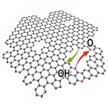 The oxygen reduction reaction (ORR) is the core process - but also the bottleneck - for the cathode reaction of energy-conversion devices like certain types of fuel cells and metal-air batteries. Nanocarbon materials are very promising alternatives for the noble metal catalysts, especially platinum, that have been used to boost this reaction. New work comprehensively reviews and correlates activity origins of nanocarbon-based ORR electro�catalysts, considering the dopants, edges, and defects. Specific doping at defective edges is expected to render practical applications for metal-free nanocarbon electrocatalysts.
The oxygen reduction reaction (ORR) is the core process - but also the bottleneck - for the cathode reaction of energy-conversion devices like certain types of fuel cells and metal-air batteries. Nanocarbon materials are very promising alternatives for the noble metal catalysts, especially platinum, that have been used to boost this reaction. New work comprehensively reviews and correlates activity origins of nanocarbon-based ORR electro�catalysts, considering the dopants, edges, and defects. Specific doping at defective edges is expected to render practical applications for metal-free nanocarbon electrocatalysts.
Jan 12th, 2017
 Methanol fuel cells are widely considered as a potential source of future energy due to the usage of methanol as a liquid fuel; simplicity in operation; higher energy density of methanol fuel; high power density obtained etc. However their commercialization is greatly hindered by methanol crossover taking place in the membrane area of fuel cells, leading to short circuits and greatly affecting overall performance. By using two-dimensional (2D) materials - graphene and hexagonal boron nitride (hBn) - in methanol fuel cell systems, researchers now have overcome this bottleneck.
Methanol fuel cells are widely considered as a potential source of future energy due to the usage of methanol as a liquid fuel; simplicity in operation; higher energy density of methanol fuel; high power density obtained etc. However their commercialization is greatly hindered by methanol crossover taking place in the membrane area of fuel cells, leading to short circuits and greatly affecting overall performance. By using two-dimensional (2D) materials - graphene and hexagonal boron nitride (hBn) - in methanol fuel cell systems, researchers now have overcome this bottleneck.
Dec 7th, 2016
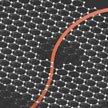 Traditionally, the size of electrode materials in supercapacitors is reduced to nanometers to enable high surface area and more room for storing more amounts of energy. But the microscopic electron distribution in nanocarbons limits the total amount of stored energy through a property called 'quantum capacitance'.
Although a lot of charge could be stored in the pores on nanocarbons due to their high surface area, their inherently low quantum capacitance reduces the net energy that could be drawn from supercapacitors. Researchers have controllably added nitrogen atoms to graphene to achieve carbon supercapacitors ready for practical applications.
Traditionally, the size of electrode materials in supercapacitors is reduced to nanometers to enable high surface area and more room for storing more amounts of energy. But the microscopic electron distribution in nanocarbons limits the total amount of stored energy through a property called 'quantum capacitance'.
Although a lot of charge could be stored in the pores on nanocarbons due to their high surface area, their inherently low quantum capacitance reduces the net energy that could be drawn from supercapacitors. Researchers have controllably added nitrogen atoms to graphene to achieve carbon supercapacitors ready for practical applications.
Aug 25th, 2016
 Sodium-ion batteries (SIBs) represent an attractive alternative to lithium-ion batteries, owing to the fact that sodium resources are practically inexhaustible and evenly distributed around the world while the ion insertion chemistry is largely identical to that of lithium. Researchers have now rationally designed and fabricated a sodium ion full battery where both of the cathode and anode materials possessed very unique two-dimensional nanostructured architecture. The 2D nanostructured architecture results in excellent rate capability and stable cycling performance.
Sodium-ion batteries (SIBs) represent an attractive alternative to lithium-ion batteries, owing to the fact that sodium resources are practically inexhaustible and evenly distributed around the world while the ion insertion chemistry is largely identical to that of lithium. Researchers have now rationally designed and fabricated a sodium ion full battery where both of the cathode and anode materials possessed very unique two-dimensional nanostructured architecture. The 2D nanostructured architecture results in excellent rate capability and stable cycling performance.
Aug 17th, 2016
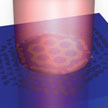 Graphene, one of the most exciting two-dimensional materials, has shown extraordinary optical properties due to strong surface plasmon polaritons supported by graphene nanostructure. Graphene metasurfaces show plasmonic resonance bands that can be tuned from mid-infrared to terahertz regime. These plasmonic devices can be used for biosensing, spectroscopy, light modulation and communication applications. Researchers now demonstrate for the first time an effective method to pattern large area graphene into moire metasurfaces with gradient nanostructures having multiband resonance peaks in mid infrared range.
Graphene, one of the most exciting two-dimensional materials, has shown extraordinary optical properties due to strong surface plasmon polaritons supported by graphene nanostructure. Graphene metasurfaces show plasmonic resonance bands that can be tuned from mid-infrared to terahertz regime. These plasmonic devices can be used for biosensing, spectroscopy, light modulation and communication applications. Researchers now demonstrate for the first time an effective method to pattern large area graphene into moire metasurfaces with gradient nanostructures having multiband resonance peaks in mid infrared range.
Aug 16th, 2016
 Photodetectors with a spectral response from the ultraviolet (UV) to visible light have significant importance in modern industrial and scientific applications such as imaging, communication, environmental monitoring and day and nighttime surveillance. Compared to other materials, the photo-current conversions of two-dimensional transition metal dichalcogenides such as MoS2 nanosheets are impressive, making them great candidates for next-generation visible light photodetectors. Researchers have now developed a facile and low-cost solution processing strategy to fabricate mechanically flexible 2D organic-inorganic hybrid thin-film photodetectors on a conventional filter paper.
Photodetectors with a spectral response from the ultraviolet (UV) to visible light have significant importance in modern industrial and scientific applications such as imaging, communication, environmental monitoring and day and nighttime surveillance. Compared to other materials, the photo-current conversions of two-dimensional transition metal dichalcogenides such as MoS2 nanosheets are impressive, making them great candidates for next-generation visible light photodetectors. Researchers have now developed a facile and low-cost solution processing strategy to fabricate mechanically flexible 2D organic-inorganic hybrid thin-film photodetectors on a conventional filter paper.

 Subscribe to our Nanotechnology Spotlight feed
Subscribe to our Nanotechnology Spotlight feed





